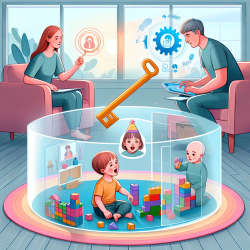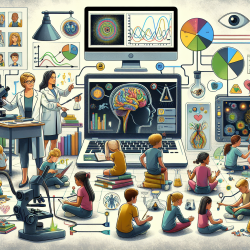The landscape of mental health care is evolving, and one promising development is the integration of online and face-to-face therapy, known as blended care. The research article "Mixing Online and Face-to-Face Therapy: How to Benefit From Blended Care in Mental Health Care" provides valuable insights into how practitioners can enhance their therapeutic approaches through blended care.
Blended care combines the advantages of both online and face-to-face therapy. According to the research, this approach not only leverages the flexibility and accessibility of online therapy but also maintains the personal connection and nuanced understanding that face-to-face interactions offer. The key is to find the right balance, tailoring the blend to each patient's needs, abilities, and preferences.
Key Findings from the Research
- Integration and Complementarity: Blended care should be a seamless integration of online and offline components, ensuring that each modality complements the other.
- Shared Decision-Making: The setup of blended care should be a collaborative process between the therapist and the patient, ensuring that the treatment plan is personalized and effective.
- Fit for Blended Care Instrument: The research introduces the "Fit for Blended Care" instrument, designed to help therapists and patients assess and set up an optimal blended care treatment plan. This tool considers potential barriers and facilitators, ensuring a tailored approach.
Implementing Blended Care in Practice
For practitioners looking to enhance their skills and improve therapy outcomes, the following steps can be derived from the research:
- Assess Patient Suitability: Use the "Fit for Blended Care" instrument to evaluate whether a patient is a good candidate for blended care. This includes assessing their access to technology, comfort with online tools, and specific therapeutic needs.
- Collaborate on Treatment Plans: Engage in a shared decision-making process with your patients. Discuss their preferences and concerns regarding online and face-to-face components to create a personalized treatment plan.
- Monitor and Adjust: Continuously monitor the effectiveness of the blended care approach. Be prepared to make adjustments based on patient feedback and therapeutic progress.
- Utilize Technology Effectively: Ensure that the online components of the therapy are interactive and engaging. This can include video sessions, interactive assignments, and regular check-ins via email or messaging platforms.
Encouraging Further Research
While the research on blended care is promising, there is still much to learn about what works best for whom and why. Practitioners are encouraged to contribute to this growing field by documenting their experiences and outcomes with blended care. By sharing insights and participating in further research, the mental health community can continue to refine and optimize blended care approaches.
Blended care offers a dynamic and flexible approach to mental health treatment, combining the strengths of online and face-to-face therapy. By implementing the findings from the research and utilizing tools like the "Fit for Blended Care" instrument, practitioners can enhance their therapeutic outcomes and provide more personalized care to their patients.
To read the original research paper, please follow this link: Mixing Online and Face-to-Face Therapy: How to Benefit From Blended Care in Mental Health Care.










